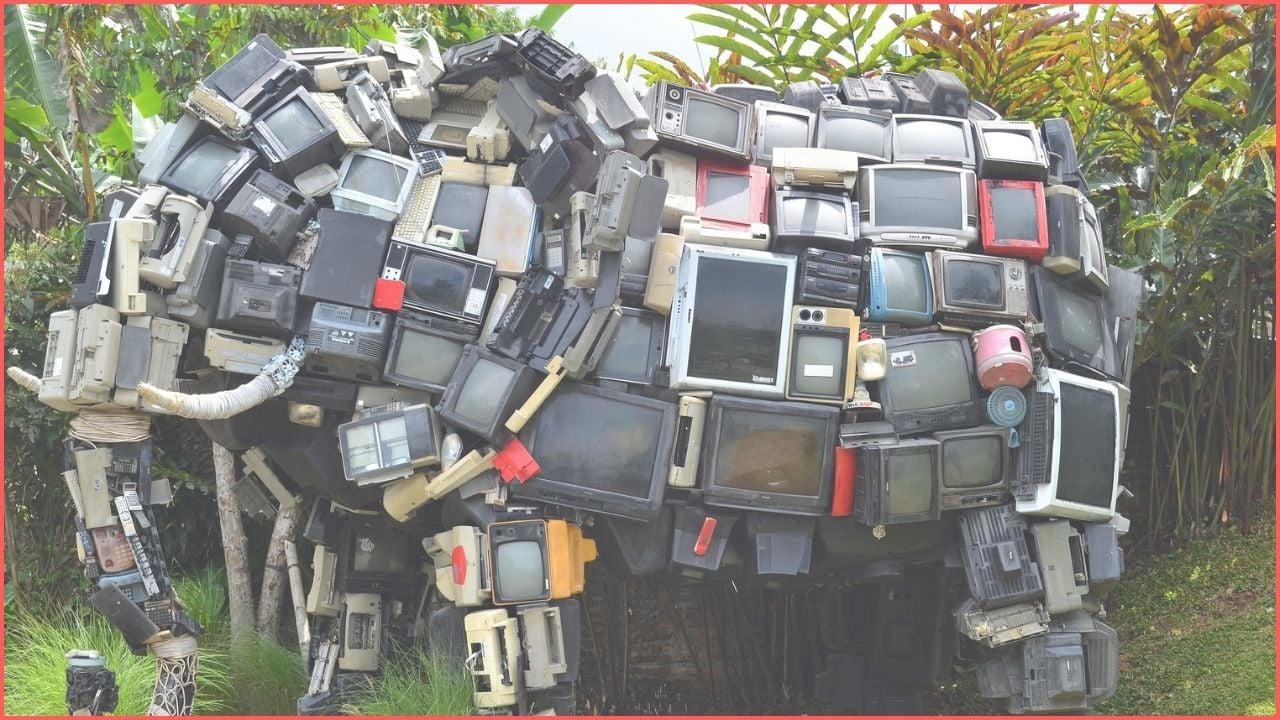Is the future of television turning pale!

About forty years ago, one day I went to visit an affluent family with my mother. At that time, there was no television in our village or anywhere nearby. We only knew about it as a device where both sound and images could be seen together, a kind of apparatus called television. Back then, we used to listen to the radio. However, not every household in the village had a radio. Those homes that did have one would gather people to listen to special programs. I distinctly remember that on Friday afternoons, Khulna Betar (a radio station) used to broadcast a one-hour drama. Everyone would eagerly sit down to listen to the drama on Friday evenings. Many times, people from neighboring houses or even from nearby villages would gather to listen. Kolkata Betar (radio station) could be heard from the Khulna region. After their own programs, Khulna Betar would broadcast programs from Dhaka Betar (radio station) as well. People listening to the radio suddenly became interested in watching television.
I have heard before that there is a television in that affluent household. However, during the daytime, there are no programs on television. But what does television look like? I wanted to see it for myself. Showing me a machine draped in beautiful white cloth, my mother said, "This is the television." I didn't dare to lift that cloth. Couldn't even touch it. But there was an idea in mind. Television is a device that is one and a half cubits long and half a cubit wide. People from the late 80's can tell it's actually a cassette player. The first day I saw a National brand cassette player, memories of that television I had seen many days ago resurfaced. Hey! that was not a Television! So, this is the story of my childhood memories of watching television.
There was still the excitement of World Cup football then as it is now. Rather, it was much more than now. The year is 1986, Maradona is immensely popular. For the first time, television was brought to our village house, Narail. For the first time, television was brought to our village, Nowagram. Some old folks still reminisce about those days. It was the late autumn. New rice had been harvested. That memory is still dim in my memory. At that time, the World Cup was underway. The World Cup matches usually started late at night. Before the matches, there used to be a program called "Chhayachhanda", featuring songs from movies. Previously, on Bangladesh Television, "Chhayachhanda" used to air once every three months. Books were available back then that listed the programs on television for the entire year. Many people used to sleep on the hay yard after watching Maradona's World Cup game. I used to wake them up early in the morning. Some might find it hard to believe that several people used to gather in one place to watch television. I have seen those people with my own eyes, walking several kilometers just to watch television from a distance. In the early days of Bangladesh Television, programs used to start in the evening. We used to eagerly await the opening of television during those times. At that time, Bengali full-length films were aired once in three months after the English news at 10 pm. The program ended late at night. People used to come from far and wide to watch movies. Then, when movies started airing on Friday evenings, the television was brought out from the house and placed in the yard.
Many may remember that in 1990, when Iraq attempted to occupy Kuwait, the United States launched an attack on Iraq. I remember living in a village in Chuadanga at that time. Every evening at 8 o'clock, hundreds of people used to gather around the only television set in the Union Parishad to watch the news together. The sound of television doesn't reach far. So, those behind want to hear what was said in the news to the people in front. At that time, Saddam Hussein emerges as a hero among Bengali Muslims.
In villages, when electricity started becoming available rapidly, people began to buy televisions quickly. Sometimes, they would decorate black-and-white televisions with colorful plastic sheets to make them look colorful. How much does a colored TV cost? Who watches these? Even this didn't dampen people's enthusiasm. In the country, "colored TV" referred to the old Japanese brand Sony. Even then, National was the best in black and white. Then companies like Nippon and Nikkon started selling televisions at comparatively lower prices. This expansion of television gradually made it a powerful medium in the commercial journey.
Since the beginning of the 1990s, television has dominated Bangladesh for about the next 25 years. However, the rapid proliferation of smartphones and the internet seems to have disrupted this trend abruptly.
I'll tell you about an incident: in 2012, my first television drama "Oloshpur" was aired. The drama had a total of 1,074 episodes. After that, on various television channels including ATN, Banglavision, Channel i, NTV, and ATN Bangla, more than 2,000 episodes of my dramas have been aired. Initially, television channels used to monitor Television Rating Points (TRP). If for any reason the TRP results were unsatisfactory, the TV channels would hold meetings. Various directives would be given, but at one point, television dramas started being broadcast on YouTube alongside television broadcasts. Initially, television channels may not have anticipated the online popularity. Now, television dramas are no longer influenced by TRP ratings. Instead, discussions revolve around views. Even if a drama airs on television, its popularity is measured by the views it receives on YouTube. Each television channel has a separate channel on YouTube, not just for programs but also for news broadcasts.
In the extensive history of advertising on radio and television, it is observed that in the 1950s, television began to dominate as the national medium, surpassing radio. However, the first television commercial aired for monetary exchange was broadcast in New York on July 1, 1941. This was an advertisement for the Bulova Watch Company. According to various reports in newspapers, this advertisement, which lasted only 10 seconds, cost between $4 and $9 to air. It was broadcasted at the beginning of a baseball game, seen by approximately 4,000 people in New York. In the 1840s, in cities like New York and others in the United States, there were groups of people who engaged in buying and selling advertising space in newspapers. The first advertising agency in the United States was established in 1841. In 1871, the first advertising agency in the United States started providing creative services. However, the British have remained ahead in this profession. The first advertising agent in the United Kingdom was possibly a person named William Taylor, who opened an office in Warwick Square, London, in 1786.
With the advent of advertising on platforms like Google, Facebook, and YouTube, the interest of advertisers in television commercials has started to decline. Now, in Bangladesh, the television advertising market has taken a hit. Some television channels charge as little as two to four thousand taka per minute for advertising. In this crisis, their revenue has decreased. To mitigate the loss in revenue, they have reduced the cost of program production. However, those who have thought about expanding their business have developed their own apps. Here, they upload their own programs. Those who do not want to deal with the hassle of television advertisements in Bangladesh are now using these apps as an alternative. The biggest advantage of these apps is that you can watch whenever you want. You don't have to sit in front of the TV for a specific period of time. Since people value their time more in today's mechanical life, interest in television is decreasing. However, they are watching the same programs on these apps. The drama "Kothao Keu Nei" from the 90s is certainly remembered by everyone. We all used to eagerly await watching this drama every week.
After the execution of Baker Bhai, agitated Bengalis took to the streets and staged protests. The memories of dramas like "Oyomoy", "Bohubrihi", "Shongshoptok", "Jonaki jole", "Lat Bhai" are still fresh in our minds.
"Aaina" used to be broadcasted on Khulna Betar every Friday morning at 8 o'clock. I am not aware of any protests like ‘Aaina’ against the government or political parties on radio or television. Ayana’s Surat was my colleague and Sher Ali died a long time ago. Nowadays, I don't know if Aaina is still being broadcasted. However, those who have heard it still remember Aaina, but that radio has largely been lost. Even cassette players are long gone. In reality, the rise of new technologies often leaves the old ones behind.
Recently, the lyricist of the song "Amar E Duti Chokh Pathor To Noy" (My Two Eyes Aren't Stones), Jahidul Haque, has passed away. Following his demise, Rangpur Betar organized an event in his memory. I have heard this song several times. To learn more about Jahidul Haque, I searched on Google. The program on the radio was found.
The incident is precisely why I'm saying that radio programs now have to be listened to on YouTube. Television dramas, news, or other aired programs also have to be watched on YouTube. So, Is the future of television turning pale!


Leave A Comment
You need login first to leave a comment